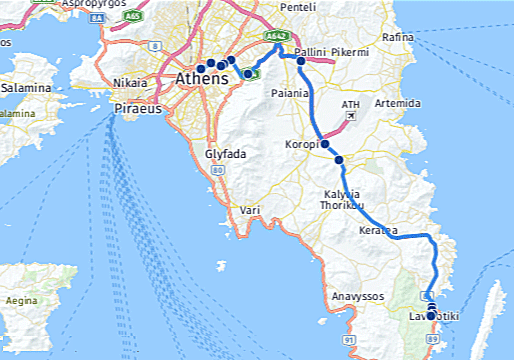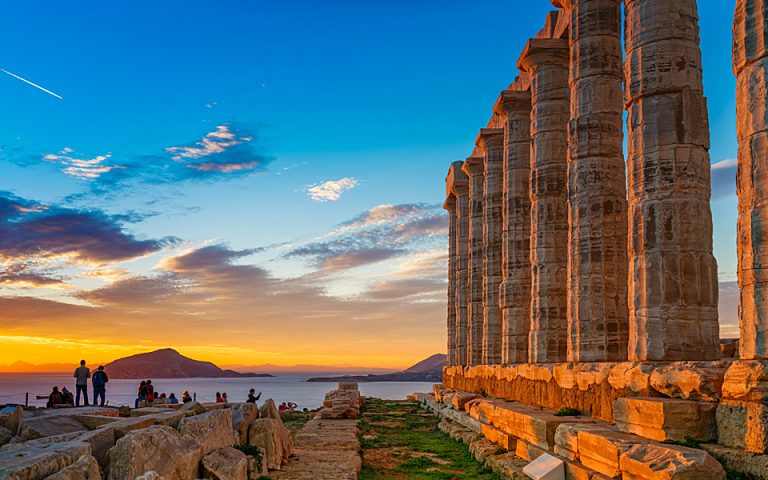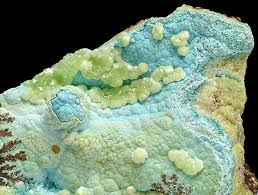1. LTCP and Lavrion Basic Info
The Summer Schools take place in Lavrion Technological Park (LTCP). This site bears a strong underground mining tradition that goes back almost to 2000 BC. The LTCP site includes a number of impressive restored historical buildings, and is characterized as a landmark of industrial architecture. In these restored buildings a number of innovative enterprises are based while the site is a venue for numerous cultural and scientific events.
Lavrion is around 50 km from the center of Athens and almost 30 km from the Athens International Airport. It is a modern city with Restaurants, shops and cafes offering a vivid summer life. Moreover, a major port and ferry terminal for the Greek islands and a marina are also located there, just 1 km from the LTCP site.

2. Transportation info
Lavrion is accessible through a number of ways.
Taxi service is one of them and this is highly recommended when coming to Lavrion directly from Athens International Airport (AIA). It is around 35 km, around half an hour drive with the cost ranging from 40 to 50 €. There is also a bus service to Lavrion from AIA.
Other transportation options from the Athens center are the use of Orange KTEL-Attika buses, or the combined use of suburban railway (Proastiakos) until the Koropi station (Athens – Airport section) and taxi or bus from there.
Orange KTEL-Attika buses leave from Pedion Areos (Alexandras Av. & Patission Str.) in the center of Athens. They leave every half-hour.
The Orange KTEL-Attika also connect Athens to Sounion through the coastal road. The buses leave every hour and have a bus stop on Fileninon Street (near Syntagma Square). You can connect with the bus from Sounion to Lavrion. The cost of the bus service is around 6 €.
More information can be found here.

LTCP will assist the School participants in having a comfortable transportation from the airport to the hotel and back and the transfers from the hotel to the venue of the event. Furthermore, LTCP will arrange for dedicated shuttle bus from Koropi station (suburban rail) to the LTCP in the morning and the return in the afternoon to all participants staying in Athens.
3. Accommodation
In the wider area of Lavrion there are a number of hotels to facilitate the accommodation during the Summer School periods. LTCP will arrange special prices with hotels around the wider area. LTCP secretariat will do its best to facilitate your stay in Lavrion but please for more information please visit the hotels’ websites first.
Please note that each participant is responsible for its own room reservation.
An indicative list of hotels is given below:
Hotels in Lavrion
- NJ APART HOTEL: https://www.njapartmentslavrio.com/en-gb/rooms
- Nikolakakis Rooms Lavrio: https://www.lavrio-rooms.com/
Hotels near Lavrion
- Cape Sounio: https://www.capesounio.com/
- Aegeon hotel: https://www.aegeon-hotel.com/
- Saron hotel: http://saronhotel.gr/
Besides hotels the area has many apartments and rooms listed in Airbnb and other similar platforms.
The wider area of Lavrion bears a significant heritage. The area is known for its industry and mining operations from ancient times. The Silver mines date back to prehistoric times. The washeries where the silver was extracted are still visible and currently in a state of being restored. These mining facilities are believed to be the oldest in the world. The Lavrion Silver mines financed the fleet with which the ancient Athenians defeated the Persians, and financed the building of the Acropolis and other monuments of the Golden Age of Athens.
Furthermore, the area is widely known for the ancient Greek Temple of Poseidon, the god of the sea in the Greek mythology. The temple was built between 444 BC and 440 BC. The remains are perched on the headland surrounded by the sea.
According to legend, Cape Sounion is the spot where Aegeus, king of Athens, jumped to his death off the cliff, thus giving the name to the Aegean Sea. On a clear day you can see at least 7 beautiful Greek islands.
About 500m from the Temple of Poseidon are the remains of another structure, a sanctuary dedicated to Athena. It was in an enclosed area which contained another altar, but it’s not know to which god it was dedicated. The Temple of Athena itself is 16m x 11m and little remains aside from the foundation of a pedestal upon which the cult statue of Athena rested.


4. Sightseeing in Lavrion
In Lavrion visitors can also see the Mineralogical Museum of Lavrion and the Archaeological Museum of Lavrion.
The Mineralogical Museum of Lavrion (Iroon Politechniou Sq., 19500 Lavrion) was inaugurated in September 1986, with the aim of highlighting one of the most important aspects of the region’s natural wealth. The Mineralogical Museum of Lavrion is housed in a small but noteworthy example of the industrial architecture of the 19th century (1873), in the remains of the important metal-washing plant of the Greek Society.
The Lavrion area is one of the most favoured sites in the world from the point of view of its variety of minerals, and samples of its minerals are displayed in the greatest Natural History Museums in the world. Some of the exhibits are exceedingly rare (annabergites, serpierites, spangolites, laventulanites, etc.), while others are particularly beautiful specimens (azurite, adamsite, smithsonite, etc.). There are also rare specimens of the famous “slag minerals”.
The Archeological Museum of Lavrion (1, Andrea Kordella Street, 19500 Lavrion) is situated around 100 meters east of the mineral museum and displays local archaeological finds, including items related to the mining techniques of ancient Lavrion.
Besides all the above, the coastal area is available for swimming and all sorts of sea sports, snorkeling, diving, etc.
For more things to do and see in Lavrion, you can visit the TripAdvisor Lavrion Page

You can get more info regarding the history of LTCP site and on wider Lavrion area through the site of yougoculture.com.
For more things to do and see in Lavrion, you can also visit the TripAdvisor Lavrion Page.
